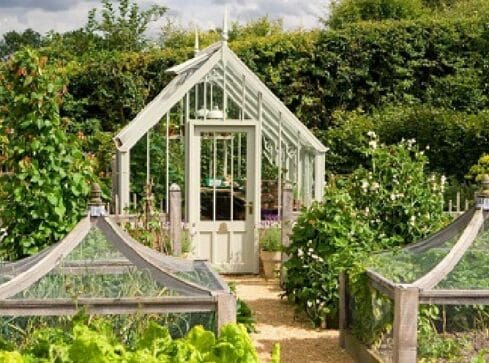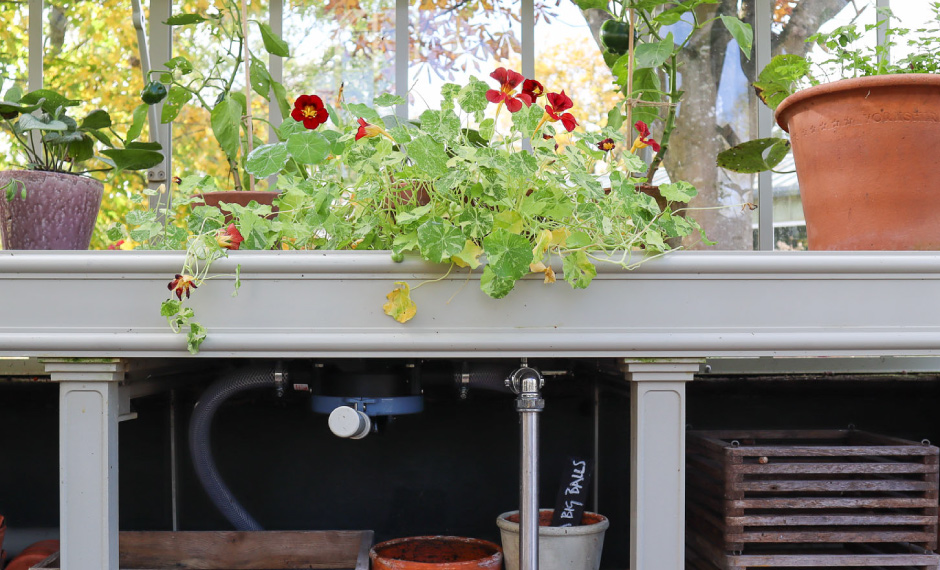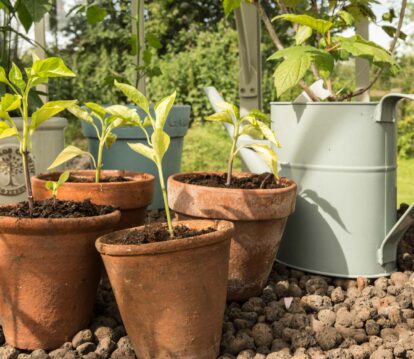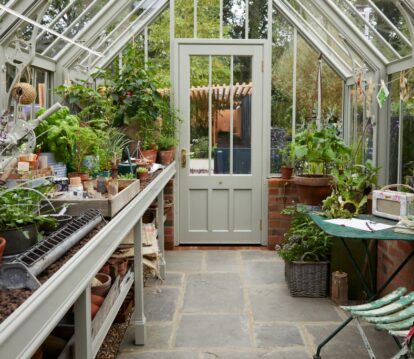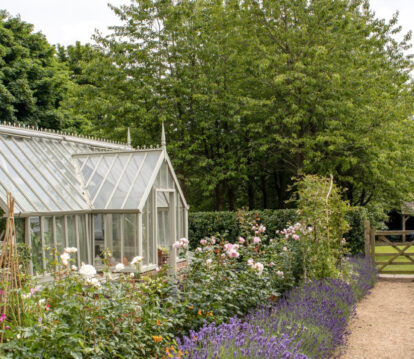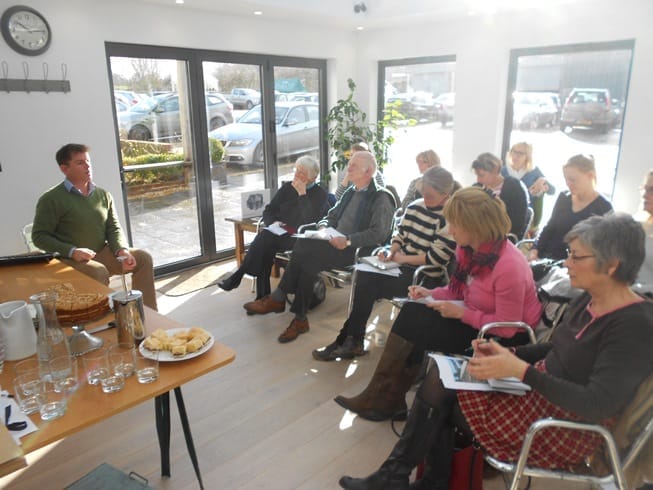
The first rays of sunshine warmed the atrium at Torberry as a group of interested friends of Alitex joined our event run by Nick Tripp from the Landscape and Architectural Design practice Taylor Tripp (Hampshire).
Nick started by introducing us to some fabulous productive gardens he has worked on during his busy professional life. Essentially he encouraged us to think about what we wanted from our potager – they are great at attracting wildlife into the garden and are beautiful to look at, so think about the site of it in your garden. Combining crops with flowers can look great or simply growing blocks of herbs which are underplanted with spring flowering bulbs. I like the grape hyacinth in blocks which are then overtaken by summer salad crops. (All herbs enjoy being really chopped back but seeds heads also strike classical poses during frosty winters – keep a balance)
Getting the structure right is vital and we were encouraged to think about our preferences here. Marking and planning out the area is a good idea – keeping the pathways between the beds at either 60cm (1 person access), 120cm (should you need a wheelbarrow to go down there) and 2.5m if you will need heavy machinery to access the area. If your pathways are to be grass, this can be problematic as they get worn out and are difficult to maintain with grass growing up the side of the beds. Nick suggested a hoggin pathway which looks rustic and creates year round form. You can create this with scalpings, a membrane and hoggin – or ask your builder.
Putting structure into the space you have created for your potager is vital. Consider the edging and focus on what is natural to the area in which you live – try to stay in keeping with the general feel of your garden. Ideas for hedging include Buxus (- box – of which more later on maintenance) or hazel hurdles created by contorting cut willow or even trained espaliered fruit trees (a real hit with children as they pick the fruit in summertime). Nick illustrated why the pathways should be straight, particularly in a cottage garden – it’s the flowers which should tumble over softening the edges – not wobbly edges in the first place. Useful planting combinations can create seasonal interest in your edgings – Gallica roses and heritage varieties of flowers and veg can really provide pin points of interest in otherwise commonplace garden staples.
Note about Buxus hedging: Nick suggested this larger leaf variety as it stands up to Box Blight better than the smaller more compact varieties. Humidity is the bain of the box so try to keep air circulating by cutting back plants which have hung over the bordered hedge all summer. Keep a special eye out during Spring and Autumn, ensuring any debris at the base is cleared.
Creating height in the potager:
Runner beans can be trained to create a wind screen for more fragile plants. Use arches, arbours, cold frames and pergolas as well as simple cane stakes to create interest. Squash, cucumbers, sweet peas, beans and gourds all react very well to this kind of “elevating”, allowing the fruits to absorb maximum sunlight.
The health of your raised beds, once created, can be maintained with well rotted compost, good irrigation (and access to water butts) and adequate sunlight. Any shady areas will be useful for rhubarb growing. Ensure your plants have something to offer each season – keep a balance of permanent structure and annual colour. The siting of your greenhouse and cold frames should be workable within the potager – you need to ensure you make your gardening life as easy and therefore as much fun, as possible! Nick pointed out that walled gardens are often built on a slope which allowed a differentiation between levels of soil – how quickly one heated up compared to the next; It allowed for a variety of produce.
Nick talked about a framework of timeless design complemented with the craft of gardening – which very much seems to be the speciality of his practise. The opportunity to take some of his top tips and put them into practise is something to very much look forward to – I’m reaching for my wellies as I write.
Huge thanks to Nick for a lovely morning. Our guests are now looking forward to the next event here – our own Gardeners Question Time on 13 March. Some of our guests were even able to take a tour of the factory to see it in full swing – come along to our open morning on Saturday 15 March if this is of further interest to you.
Find out more by contacting Nick’s design practice


